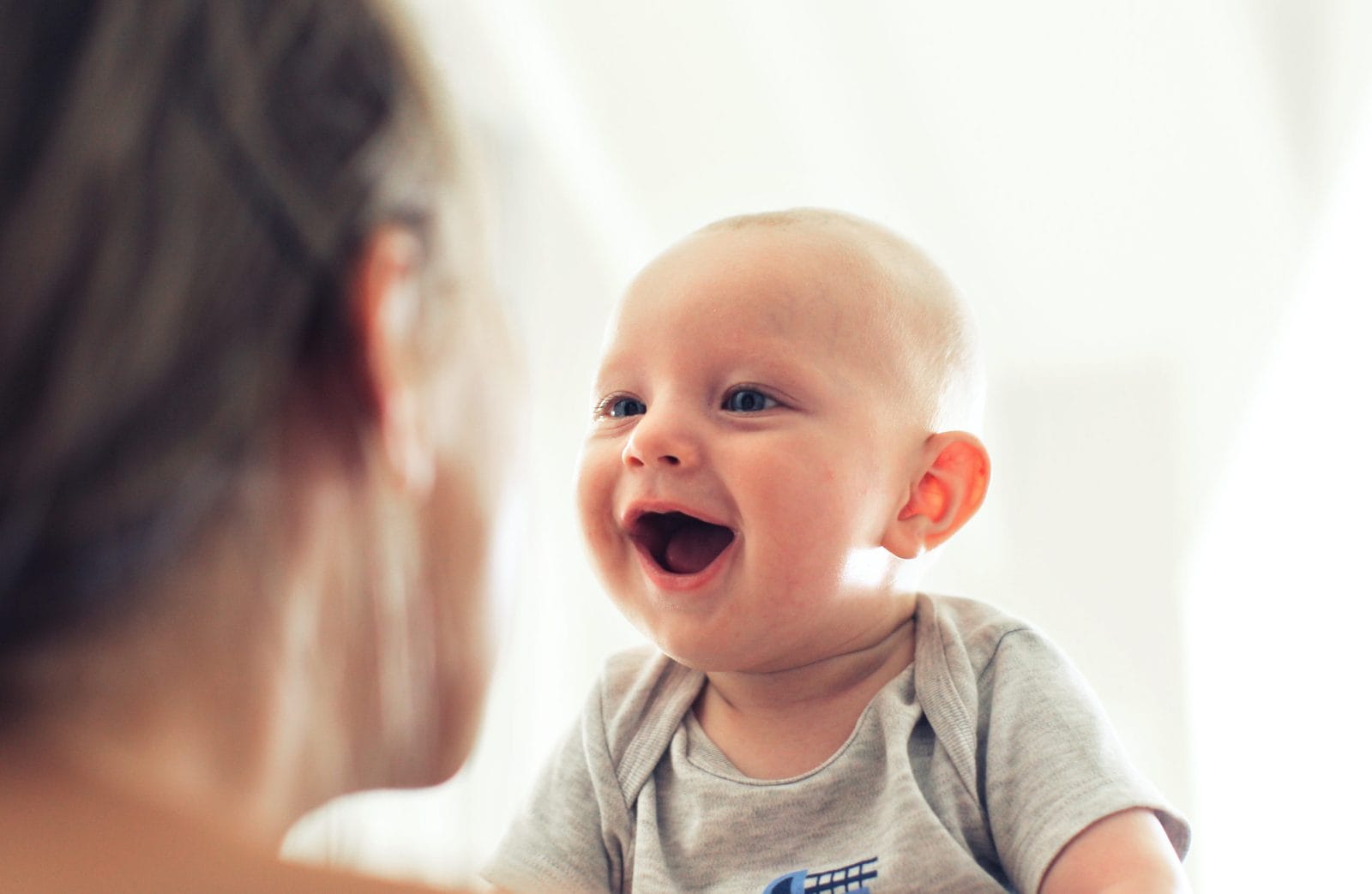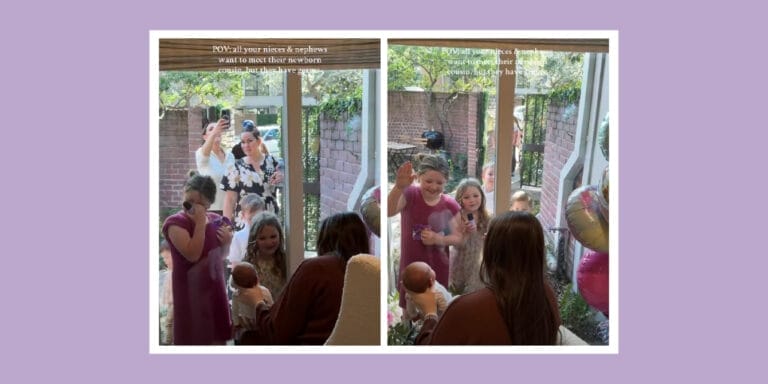What happens to a mom’s brain when their baby smiles for the first time

This gooey feeling moms may get from seeing their babies smile isn't just a recreational high—it serves a purpose.
In the middle of that postpartum daze, the sleepless nights, the recovery, the adjustment to a new schedule and learning the cues of a new baby, there are those moments when a new mom might think, I don’t know how long I can do this.
Fortunately, right around that time, newborns smile their first real smile.
For many mothers, the experience is heart-melting and soul-lifting. It’s a crumb of sustenance to help make it through the next challenges, whether that’s sleep training, baby’s first cold, or teething. Each time that baby smiles, the mother remembers, I can do this, and it’s worth it.
Dayna M. Kurtz, LMSW, CPT a NYC-based psychotherapist and author of Mother Matters: A Holistic Guide to Being a Happy, Healthy Mom, says she sees this in her clinical practice.
“One mother I worked with recounted her experience of her baby’s first smile. At eight weeks postpartum, exhausted and overwhelmed, she remembered her baby smiling broadly at her just before a nighttime feeding,” Kurtz says. “In that moment, she was overcome by tremendous joy and relief, and felt, for the first time, a real connection to her son.”
So what is it about a baby’s smile that can affect a mother so deeply? Can it all be attributed to those new-mom hormones? Perhaps it stems from the survival instincts that connect an infant with its mother, or the infant learning social cues. Or is there something more going on inside our brains?
In 2008, scientists in Houston, TX published their research on the topic. Their study, “What’s in a Smile? Maternal Brain Responses to Infant Facial Cues“, takes data from the MRI images of 26 women as they observed images of infants smiling, crying, or with a neutral expression.
The images included the mother’s own infant alternated with an unknown infant of similar ethnicity and in similar clothing and position. In each image, the baby displayed a different emotion through one of three facial expressions; happy, neutral, or sad. Researchers monitored the change in the mothers’ brain activity through the transitions in images from own-infant to unknown-infant, and from happy to neutral to sad and vice versa.
The results?
“When first-time mothers see their own baby’s face, an extensive brain network appears to be activated, wherein affective and cognitive information may be integrated and directed toward motor/behavioral outputs,” wrote the study’s authors. Seeing her infant smile or cry prompts the areas of the brain that would instigate a mother to act, whether it be to comfort, care for, or caress and play with the baby.
In addition, the authors found that reward-related brain regions are activated specifically in response to happy, but not sad, baby faces. The areas of the brain that lit up in their study are the same areas that release dopamine, the “pleasure chemical.” For context, other activities that elicit dopamine surges include eating chocolate, having sex, or doing drugs. So in other words, a baby’s smile may be as powerful as those other feel-good experiences.
And this gooey feeling moms may get from seeing their babies smile isn’t just a recreational high—it serves a purpose.
This reward system (aka dopaminergic and oxytocinergic neuroendocrine system) exists to motivate the mother to forge a positive connection with the baby, according to Aurélie Athan, PhD, director of the Reproductive & Maternal Psychology Laboratory (a laboratory that created the first graduate courses of their kind in these subjects).
These networks also promote a mother’s ability to share her emotional state with her child, which is the root of empathy. “A mother cries when baby cries, smiles when baby smiles,” Athan says.
While there’s a physiological explanation underlying that warm-and-fuzzy sensation elicited by a smile, there may be other factors at play too, Kurtz says.
“In my clinical practice, I often observe a stunning exchange between a mother and her baby when the latter smiles at her. A mother who is otherwise engaged in conversation with me may be, for that moment, entirely redirected to focus on her little one,” Kurtz says. “This kind of attention-capturing on the part of the baby can enable and cultivate maternal attunement—a mother’s ability to more deeply connect with her infant. The quality of attunement in early childhood often sets the stage for one’s relationship patterns in the future.”
Whether a physiological response, a neural activation, simple instinct, or the tightening of emotional connection, the feeling generated by babies’ smiles is a buoy in the choppy ocean of new parenthood.
And while the first smile may be the most magical by virtue of its surprise and the necessity of that emotional lift, the fuzzy feeling can continue well into that baby’s childhood and beyond. It keeps telling parents, you’ve got this!
[This was originally published on Apparently]


































